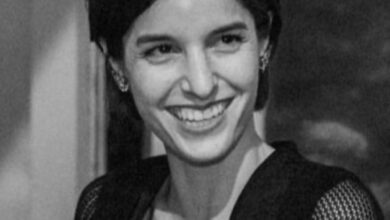9 Product Manager Interview Questions to Know

If you’re seeking a job as a product manager, brace yourself. Product manager interview questions are rarely softballs, in part because the position is so fundamental to an organization’s success.
Product managers can come from a variety of backgrounds and have diverse skill sets, which means companies looking to fill that role may face challenges in sifting through lots of candidates. Product manager job descriptions can vary greatly from company to company too — some hiring managers may be looking for a PM with marketing experience, while others need a tech genius.
9 Popular Product Manager Interview Questions
- What is product management to you?
- What aspects of product management do you enjoy the most and least?
- What are your strengths?
- For a product you owned, how did you prioritize what you worked on?
- Tell me about a time you disagreed with an engineer. How was the situation resolved?
- Tell me about a product you use often and how you might improve it.
- How do you approach solving a complex problem that nobody solved before?
- Tell me about a product feature that didn’t pan out. What would you do differently now?
- What do you value in a great workplace?
“A great product manager can transform a team and create exceptional experiences for customers. The converse is also unfortunately true,” Christina Riechers, product lead for payment products at Square, said.
That’s why product leaders spend time digging into the details of candidates’ past experiences and querying the outcomes of past products they’ve owned.
To give you a sense of what product manager interview questions you can expect to encounter, we asked hiring managers, chief product officers and product VPs to share their favorite interview questions and tips for leaving a lasting impression.
Product Manager Interview Questions
One of the questions Alex Haar, chief product officer and co-founder of supply chain data firm Parsyl, likes to open with is “What is product management?”
Because a PM’s responsibilities vary widely — depending on a company’s size, product portfolio, customer base and development phase — a candidate’s response is really a proxy for how well they will fit within a specific role. Are they more of a “zero-to-one” conceptual thinker, Haar wonders, or are they better equipped for solving problems later in the product life cycle when a company is determining product-market fit or preparing to scale its offerings?
A common follow-up, “What aspects of product management do you enjoy the most and the least?” digs deeper into an applicant’s qualifications, Haar said. The candidate’s response shows how well they are aligned with the company’s organizational structure and mission. A good fit at his startup may not be a good fit at a larger firm where product manager roles are more specialized.
“At a startup like ours, product managers wear a lot of hats,” Haar said. “That includes both high-level decisions from product managers who have been around talking to customers and [involved with] prioritization and strategy, but also making sure we’re actually shipping products and getting that value out to our customers. How do you balance those two? And the answers that I like to hear center around creating value for customers.”
When a candidate performs well in phase one, Haar said, they proceed to a meeting with cross-functional teams to assess their working style and alignment with the company’s culture. This is generally followed by a third interview in which applicants are asked to perform exercises with engineers and designers on a whiteboard. What is their problem-solving approach? Can they draw and test assumptions?
During the process, candidates are likely to have an opportunity to share their strengths. At some companies, this might be put as bluntly as, “You’ve got X years of core product experience. What might you suggest as your key strengths?”
In a candidate’s response, Riechers wants to see evidence of where they excel, but also “what are [they] uniquely going to add at Square to make not only [their] team but the entire organization better?”
Riechers is hardly alone in viewing workflow prioritization as a crucial skill set for PMs to demonstrate; it’s a point echoed by several sources who say backlogs can quickly become graveyards for good ideas.
There is no “right way” to answer Riecher’s standard question on the subject, which is this: “For a product you owned, how did you prioritize what you worked on?” Rather, a thoughtful response will show a candidate is aware of useful prioritization tools, such as the Three Feature Buckets framework, and applies a “data-driven mindset to produce results.”
Where things get a bit trickier is when fielding questions about experiences with former colleagues. One of Riecher’s most pointed questions asks candidates to “tell [her] about a disagreement that you had with your engineering partner.”
At Square, as at nearly all software companies, product managers work closely with engineering managers and designers, and entanglements over features and releases are likely to occur. It’s how a PM handles differences of opinion that matters.
“Does the candidate listen, and take the time to understand what is behind the concern?” she asked. “Do they acknowledge any frustration that is behind the disagreement? Do they understand the technical side of the work enough to recognize trade-offs? Do they take the time to work through the disagreement with their counterpart?”
Regardless of whose perspective prevails, Riechers points out, insistence on resolution is important: “Do they either agree, or ‘disagree and commit?’”
A favorite interview prompt at Parsyl is: “Tell me about a product you use often and how you might improve it.” It’s a useful query, Haar said, because it allows candidates to apply a diagnostic approach to products with which they are intimately familiar, whether that’s a parking app with a clunky payment system, or music streaming service with a minor bug.
Udi Milo, VP of product growth at Tinder, assesses a candidate’s aptitude for problem solving in a more open-ended format: “How do you approach solving a complex problem that nobody solved before? Let’s discuss some examples and dive into details together.”
Another way this type of question might be couched is as a measure of a candidate’s responsiveness to a customer’s needs. “Pick a product that you owned and are proud of. Who was the customer?”
“This should be a ‘gimme’ question for a good PM,” Riechers said. “Who was the customer? What was their pain point? How were you going to address that pain point?”
The key, in all cases, is to be ready to illustrate your thinking with a clear methodology and concrete examples.
If you’re an ambitious product manager, it’s almost inevitable you will launch some duds. That’s why Riechers asks candidates to “tell [her] about a product feature that didn’t pan out. What would you do differently now?”
Here’s Milo’s riff on the theme: “How do you handle situations where things are not going smoothly? Let’s dive into some examples and discuss.”
Self-awareness is at the heart of a good response. “We all make mistakes,” Riechers said. “How did they deal with them? Did they take responsibility for poor outcomes? How do they treat their teams? Do they have a bias toward action? What did they learn that makes them a better PM now than before the failure?”
Haar, who has a similar question in his repertoire, said assigning blame is never the right approach. “A bad answer to that question is, ‘my work was great, but this other person screwed it up.’ I mean, for lots of reasons, not the least of which is a lack of self-awareness, that’s not really an acceptable answer. But more importantly, as a product manager, you’re often leading without authority, and that’s why those relationships are so important.”
Nicholas Stanford, a product manager at Grammarly, stresses the importance of understanding a company’s history before the interview. “It’s always a great sign that you’re a conscientious person who has been thoughtful about your interest in the role,” he said. “One aspect of this might be putting some effort into understanding the company’s vision — demonstrating that you ‘get’ what the company is trying to do. It’s also a good idea to have some strong opinions ready about the company’s current product so you can show you’ve considered what’s good (or not) about it and also where the product can go in the future.”
For Milo, this learning process is a two-way street. Two of his standard questions are: “What do you need to know about Tinder to make a call on coming to work with us?” and “What do you value in a great workplace?”
But these questions also reveal whether the candidate did their homework. Do they understand enough about Tinder to be able to explain why they are interested in the role? Can they see themselves at the company for the long term? As Milo put it, “Spending effort toward getting a job at a company that one doesn’t understand or has taken the time to learn about is not a great sign.”
“We are looking for people who have shown collaborative, high-impact work with agile thinking and an adaptive positive attitude,” Milo said. “Folks with these skills will be able to adjust quickly to these new work environments, and help the team innovate on new ways to be successful together.”
How to Answer Product Manager Interview Questions
Having a strong backbone never hurts as a product manager. As a rule of thumb, according to Milo, “candidates should avoid answering a question inauthentically, meaning telling the interviewer what they want to hear.” Instead they should “push back with questions and clarifying comments. A strong performer is perfectly fine in saying they don’t fully understand the task at hand. It is a sign of humbleness and curiosity more than anything else.”
Honesty and a comfort expressing strong opinions also plays well at Grammarly, Stanford explained.
“Candidates shouldn’t worry about pointing out what can be improved. It’s likely that the interviewer shares the same opinion and wants those same improvements. Lastly — but perhaps most important — we want to find candidates who are always putting themselves in the shoes of the user and asking themselves important questions about a user’s perspective.”



